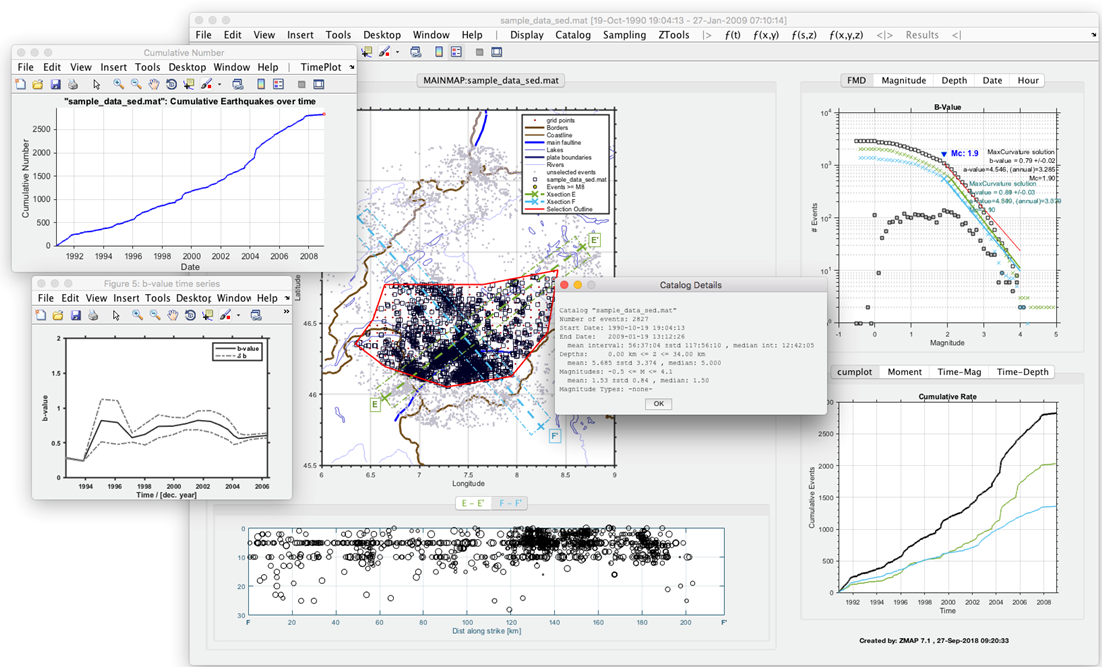ZMAP 1
Earthquake catalogues are probably the most fundamental products of seismology and remain arguably the most useful for tectonic studies. Modern seismograph networks can locate up to hundreds of thousands of earthquakes annually, providing a continuous and sometime overwhelming stream of data. ZMAP is a set of tools driven by a graphical user interface (GUI), designed to help seismologists analyse catalogue data. ZMAP is primarily a research tool suited to the evaluation of catalogue quality and to addressing specific hypotheses; however, it can also be useful in routine network operations. ZMAP was first published in 1994, with the last major release, version 6.0, in 2001.
